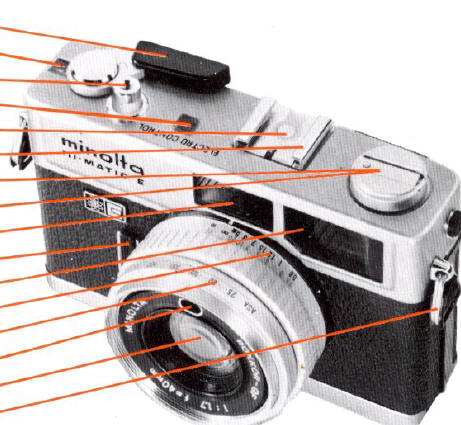

The next Hi-Matic model, which was called the Hi-Matic 7 SII and came out in 1977, was considered to be one of the finest Minolta rangefinders. The Electro Control system was abandoned after the F in favor of a simpler system. The E was followed by a succession of increasingly inexpensive models, the Hi-Matic F in 1972, the Hi-Matic G in 1974, and the Hi-Matic G2 in 1982. It used the same Electro Control automatic exposure system found on the Yashica Electro cameras. The Hi-Matic E of 1971 was a much-improved version of the C with a 40 mm f/1.7 lens and a rangefinder. The Hi-Matic 5, also released in 1969, was basically a less expensive C without the collapsing lens. The C had shutter-priority automatic exposure with a CdS meter. In the interest of compactness, it had a smaller 40 mm f/2.7 lens (which was collapsible), reduced aperture and shutter speed ranges, and no longer featured a rangefinder. In 1969 Minolta came out with a new, smaller model, the Hi-Matic C. The Hi-Matic 11 of 1969 was similar to the 9, but the 11 had shutter priority automatic exposure, aperture and shutter speed displayed in the viewfinder, and no aperture ring. The 9 was the same as the 7S with the addition of a slightly faster f/1.7 lens, additional shutter speeds of 1/2 and 1 sec., and Minolta's "Easy-Flash" system, which simplified flash photography. Also, the 7S had a hot shoe instead of the cold shoe of the 7. The CLC had two CdS cells connected in series that purportedly offered superior metering, especially in high contrast lighting. Compared with the 7, the 7S had the Contrast Light Compensator (CLC) metering system. The Hi-Matic 7S and Hi-Matic 9, both released in 1966, were somewhat improved versions of the popular 7. Additionally, it gave photographers the option of setting the exposure manually, an option not available in the original Hi-Matic.

It had a faster f/1.8 lens and used a CdS cell instead of a selenium meter. The Hi-Matic was also rebadged as the Ansco Autoset.

Both the aperture and shutter speed were set automatically. The first Hi-Matic, introduced in 1962, was offered with a 45 mm f/2 or 45 mm f/2.8 lens and featured a built-in selenium light meter and rangefinder. The original Hi-Matic of 1962 was the first Minolta camera to feature automatic exposure and achieved a small degree of fame when a version (the Ansco Autoset) was taken into space by John Glenn in 1962. Hi-Matic was the name of a long-running series of 35 mm cameras made by Minolta.


 0 kommentar(er)
0 kommentar(er)
